Caffeine and Bladder Spasms: Understanding the Link
Bladder Sensitivity Calculator
How Much Caffeine Are You Consuming?
Daily Caffeine Summary
- Coffee 95 mg/cup
- Tea 47 mg/cup
- Energy Drinks 100 mg/serving
- Other Beverages 0 mg/cup
Quick Takeaways
- Caffeine can increase the frequency and intensity of bladder spasms for some people.
- The bladder’s detrusor muscle is especially sensitive to caffeine’s diuretic and stimulant effects.
- People with overactive bladder or interstitial cystitis are at higher risk.
- Cutting back on coffee, tea, or energy drinks often reduces symptoms within a week.
- If spasms persist despite dietary changes, it’s time to see a healthcare professional.
If you’ve ever felt that sudden, urgent need to rush to the bathroom after a cup of coffee, you’re not alone. Many people wonder whether that jittery feeling is just a caffeine buzz or something more… like bladder spasms. This article unpacks the science, explains who’s most vulnerable, and gives you practical steps to keep your bladder calm without giving up your favorite brew.
What Are Bladder Spasms?
Bladder spasms are sudden, involuntary contractions of the detrusor muscle that cause an urgent, often uncontrollable, need to urinate. These contractions can happen without the bladder being full, leading to leakage or a feeling that you’ve just “missed the bus.” In medical terms, bladder spasms are a hallmark of conditions such as overactive bladder (OAB) and interstitial cystitis.
How Caffeine Works in the Body
Caffeine is a natural stimulant found in coffee, tea, chocolate, and many soft drinks. When you ingest caffeine, it quickly crosses the blood‑brain barrier and blocks adenosine receptors, which normally tell your brain to relax. The blockage leads to increased release of neurotransmitters like dopamine and norepinephrine, giving you that familiar “alert” sensation.
Two effects of caffeine are especially relevant to bladder function:
- Diuretic effect: Caffeine stimulates the kidneys to produce more urine by increasing blood flow and inhibiting sodium reabsorption.
- Stimulatory effect on smooth muscle: Caffeine can raise levels of catecholamines (e.g., epinephrine), which make smooth muscles-like the detrusor-more prone to contract.
Both mechanisms can set the stage for that uncomfortable urge.
Why Caffeine Can Trigger Bladder Spasms
The bladder is essentially a stretchy sac lined with smooth muscle fibers. When the detrusor muscle contracts at the right time-when the bladder is full-it empties urine through the urethra. However, caffeine’s stimulant properties can cause premature or excessive contractions.
Here’s the chain reaction in plain language:
- Caffeine raises the volume of urine (diuretic effect).
- The increased urine volume fills the bladder faster.
- At the same time, caffeine boosts catecholamine levels, making the detrusor muscle more irritable.
- The irritated muscle fires off spasms even when the bladder isn’t full, leading to urgency and possible leakage.
For most healthy adults, the body compensates, and the symptoms are mild. But if you already have a sensitive bladder, the added irritation can tip the balance.
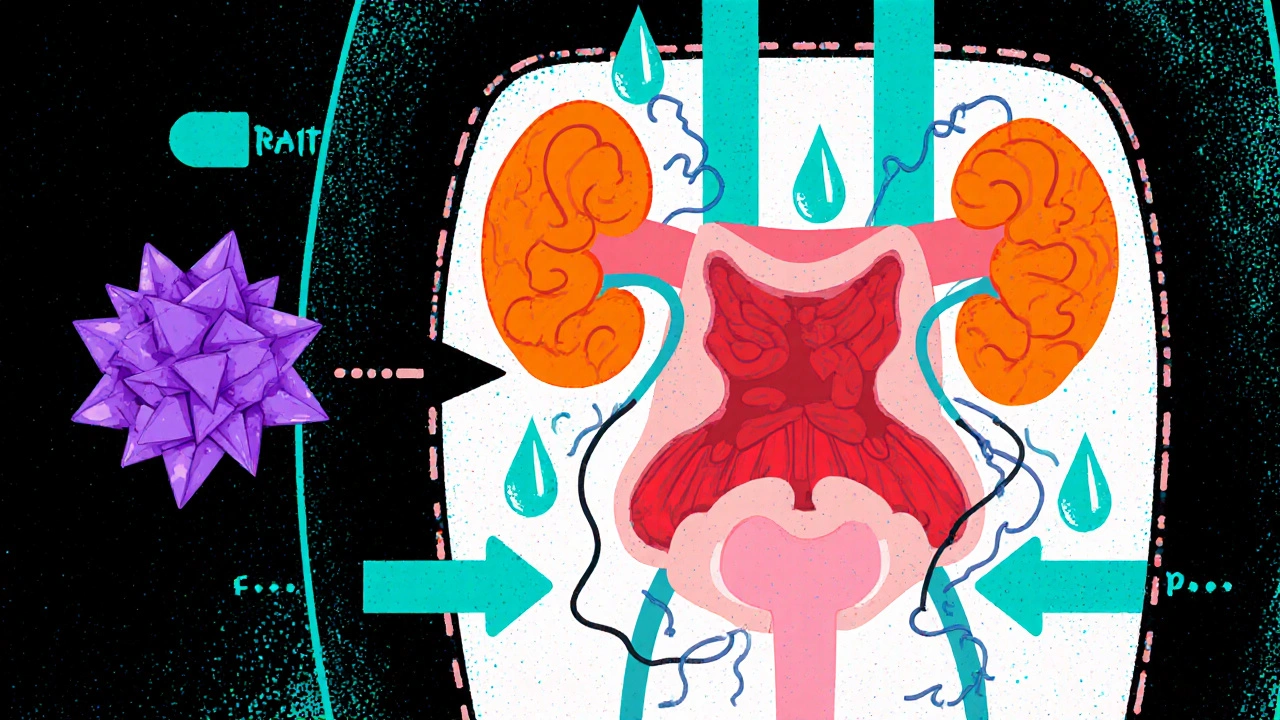
Who’s Most At Risk?
Not everyone reacts the same way to caffeine. Certain groups feel the impact more sharply:
- Overactive bladder patients often have a hyper‑responsive detrusor muscle.
- People diagnosed with Interstitial cystitis (also called painful bladder syndrome) have chronic bladder wall inflammation that makes spasms more likely.
- Those with a recent urinary tract infection (UTI) may experience temporary heightened sensitivity.
- Older adults often have reduced bladder capacity and may notice caffeine’s effect more.
- Individuals who consume large amounts of caffeine-four or more cups of coffee a day, energy drinks, or excessive tea-are more prone to symptoms.
Managing Caffeine Intake Without Going Cold Turkey
If you love your morning brew, you don’t have to ditch it entirely. Small, strategic tweaks can make a big difference:
- Track your intake: Keep a simple log for a week. Note how many cups, type of drink, and any bladder symptoms you notice.
- Choose lower‑caffeine options: Switch from espresso (≈ 63 mg caffeine per shot) to drip coffee (≈ 95 mg per 8 oz) or try half‑caffeinated blends.
- Space drinks out: Aim for at least a two‑hour gap between caffeine consumption and bedtime to reduce nighttime urgency.
- Hydrate wisely: Pair caffeine with plenty of water. Adequate hydration helps dilute urine and reduces irritation.
- Consider timing: Some people find that having caffeine after the bladder is relatively empty (e.g., after a bathroom break) reduces the chance of a spasm.
Other Lifestyle Strategies to Calm the Bladder
Beyond caffeine, a few everyday habits support bladder health:
- Pelvic floor exercises (Kegels) strengthen the muscles that help control urine flow.
- Limit other bladder irritants such as alcohol, carbonated drinks, citrus juices, and artificial sweeteners.
- Maintain a regular bathroom schedule-usually every 3-4 hours-to train the bladder.
- Manage stress: Stress hormones can also trigger detrusor overactivity. Mindfulness, yoga, or short walks can help.
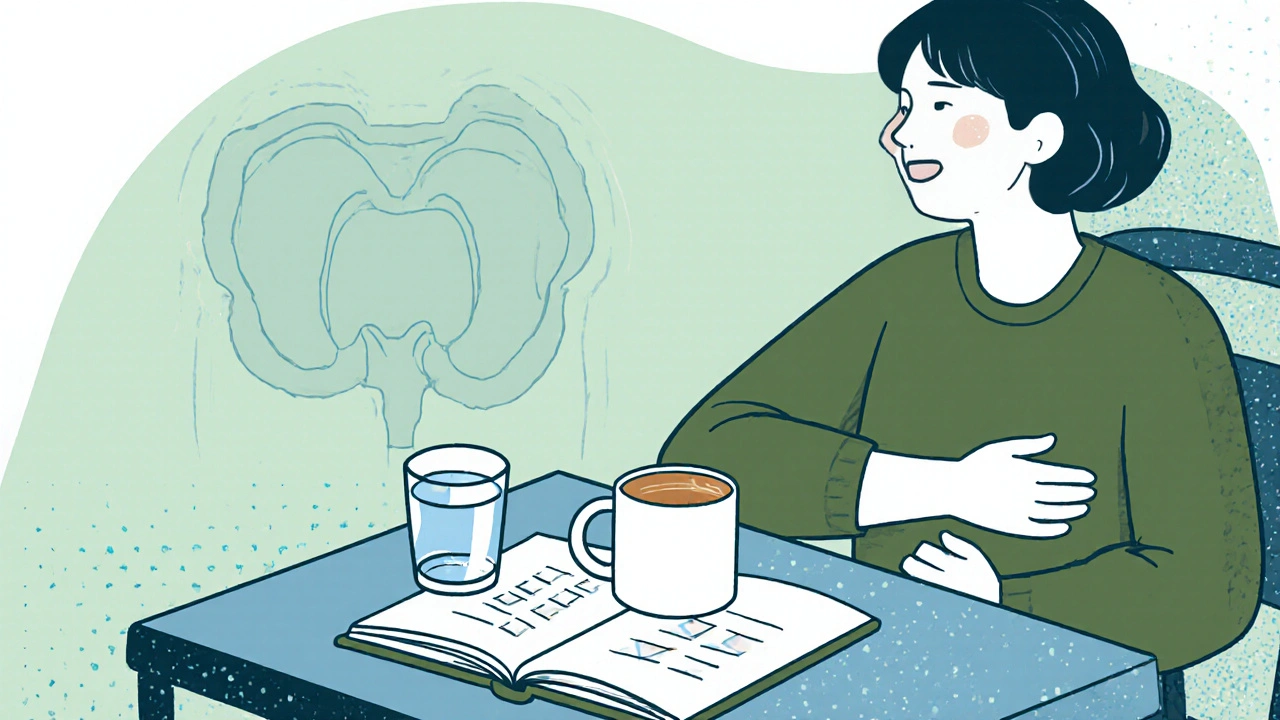
When to Seek Professional Help
If you’ve tweaked your caffeine habits and still experience frequent urgency, leakage, or pain, it’s time to talk to a clinician. They may recommend:
- Urinalysis to rule out infection.
- Bladder diary to pinpoint patterns.
- Medication such as antimuscarinics or beta‑3 agonists to relax the detrusor muscle.
- Physical therapy focused on pelvic floor rehabilitation.
Early evaluation prevents complications and helps you find the right mix of diet, lifestyle, and possibly medication.
Caffeine vs. Other Common Beverages: Which Is Harder on the Bladder?
| Drink | Caffeine (mg) | Diuretic Rating* | Typical Effect on Bladder |
|---|---|---|---|
| Drip Coffee | 95 | High | May increase frequency & spasms |
| Black Tea | 47 | Moderate | Often tolerable in small amounts |
| Green Tea | 28 | Low‑Moderate | Gentle, may still affect sensitive bladders |
| Decaf Coffee | 5 | Low | Minimal impact for most |
| Carbonated Water | 0 | Low | Carbonation can irritate bladder lining |
| Fruit Juice (orange) | 0 | Low | Acidic content may cause irritation |
Use this table as a quick reference when planning your daily fluids. If you notice a pattern-say, more urgency after coffee than after tea-adjust accordingly.
Bottom Line
Caffeine isn’t inherently “bad” for the bladder, but its stimulant and diuretic actions can aggravate bladder spasms, especially in people with underlying sensitivities. By tracking intake, choosing lower‑caffeine options, and supporting overall bladder health, most folks can enjoy their favorite drinks without constant bathroom trips.
Can decaf coffee still cause bladder spasms?
Decaf contains a tiny amount of caffeine (usually under 5 mg per cup) and its diuretic effect is minimal. Most people with mild sensitivity can tolerate decaf without triggering spasms, though other compounds in coffee could still cause irritation for a few individuals.
How long does it take for bladder symptoms to improve after cutting caffeine?
Many report noticeable relief within 3‑7 days, but full recovery can take up to two weeks, especially if the bladder has been chronically irritated.
Is it safe to take medication for overactive bladder while still drinking coffee?
Yes, but it’s best to discuss dosage with a doctor. Some medications work by relaxing the detrusor muscle, and caffeine’s stimulating effect may counteract them if intake is high.
Do herbal teas like chamomile affect bladder spasms?
Chamomile is caffeine‑free and has mild anti‑inflammatory properties, making it a bladder‑friendly alternative for most people.
Can staying hydrated actually worsen bladder spasms?
Proper hydration dilutes urine and reduces irritation. However, drinking large volumes in a short period can overload the bladder, so spread fluid intake throughout the day.
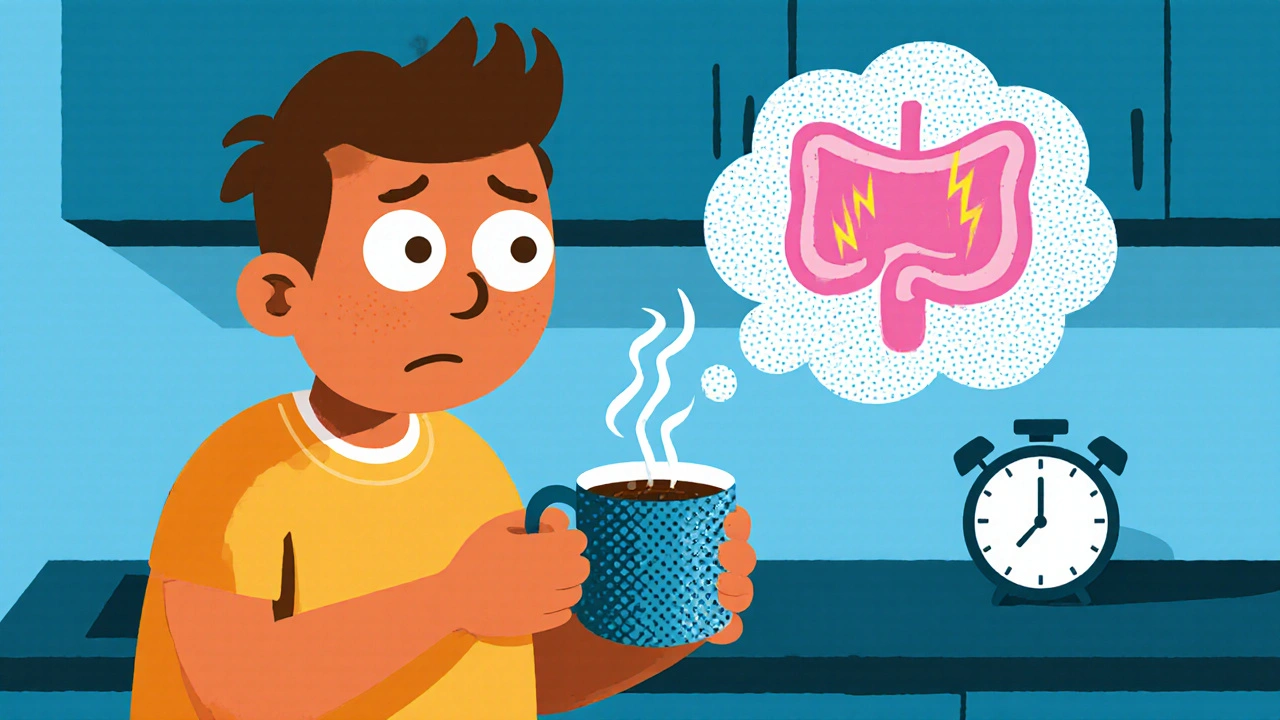

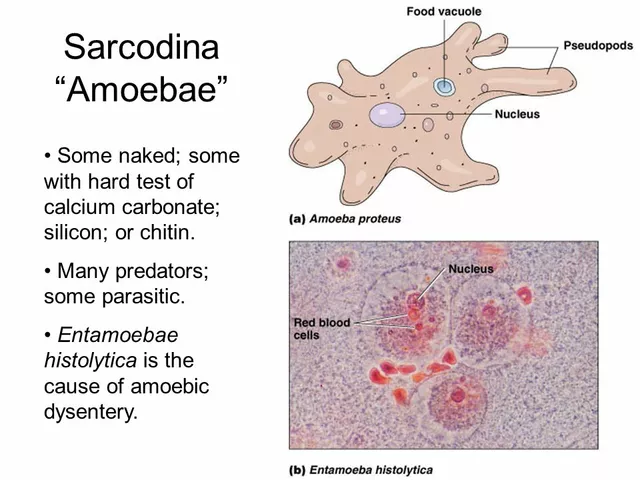
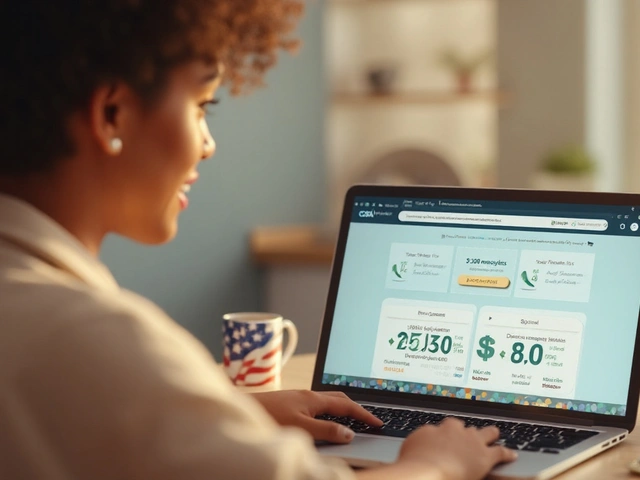

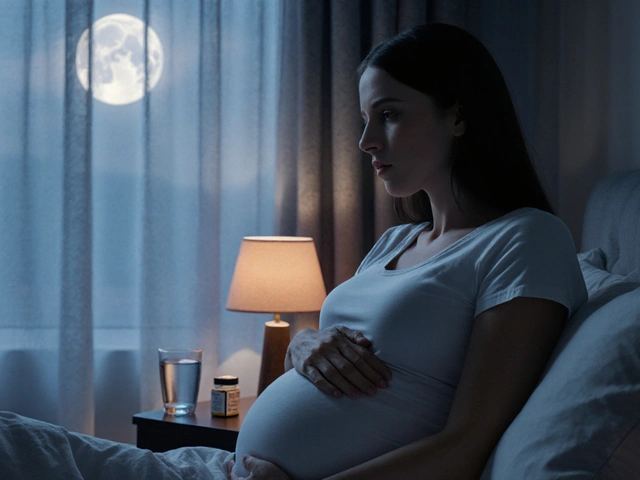
3 Comments
Dan Danuts
October 23 2025I've been keeping a simple caffeine log for the past two weeks, noting each cup and any urgency I feel later.
It turned out that even a single espresso in the morning can set off a cascade of trips to the bathroom for me.
Since switching to half‑caffeinated beans and spacing my drinks, the spasms have dropped dramatically.
Pairing the coffee with an extra glass of water seems to dilute the irritation, too.
Anyone else found that a quick bladder‑strengthening routine helps keep things under control?
Dante Russello
November 15 2025The relationship between caffeine and bladder spasms is multifaceted, involving both diuretic and smooth‑muscle‑stimulating mechanisms;
When you ingest caffeine, the kidneys ramp up urine production, increasing bladder volume sooner than usual,
At the same time, catecholamine release heightens detrusor muscle excitability, making premature contractions more likely,
For individuals with a baseline overactive bladder, this double hit can feel like a relentless timer ticking toward the next bathroom break,
Even people without a formal diagnosis may notice a subtle increase in urgency after a strong cup of coffee,
The key variable, however, is personal sensitivity-some folks can down a quadruple espresso with no issues, while others experience spasms after a single tea,
Age also plays a role; older adults often have reduced bladder compliance, which amplifies caffeine's effects,
Research cited in urological journals confirms that reducing caffeine intake frequently leads to symptom improvement within a week,
That said, the timeline is not universal-some patients report relief only after two weeks of sustained dietary changes,
Practical steps include tracking intake, choosing lower‑caffeine alternatives, and ensuring adequate hydration to dilute urine,
It is also worthwhile to experiment with timing, for instance drinking caffeine after a bathroom visit to minimize immediate bladder filling,
If symptoms persist despite these adjustments, a professional evaluation is advisable to rule out infection or more serious pathology,
Pharmacologic options such as antimuscarinics or beta‑3 agonists can be considered, but they work best when combined with lifestyle modifications,
Pelvic‑floor physical therapy offers another non‑pharmacologic avenue, strengthening the muscles that help control urine flow,
Ultimately, the goal is a balanced approach that lets you enjoy your favorite brew without the constant urge to run for the restroom.
James Gray
December 8 2025I totally get it-caffine can be a sneaky trigger for those pesky bladder spasms, especially if you’re already dealing with OAB.
Definately try swapping one of your daily coffees for a half‑caff latte and see if the urgency eases.
Many of us have found that timing the drink after a bathroom break makes a big difference.
Stick with the log you started; the data will show you the pattern!